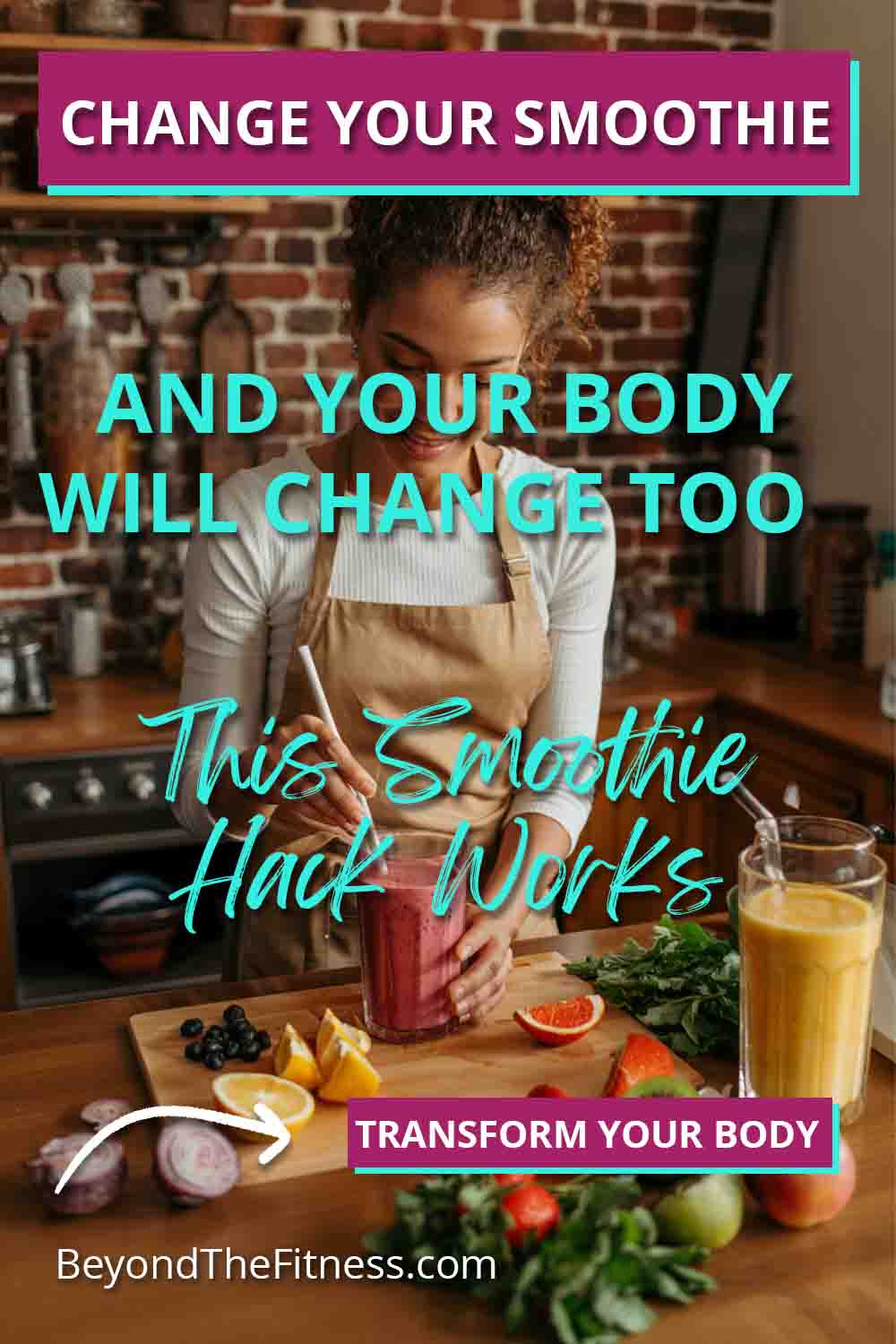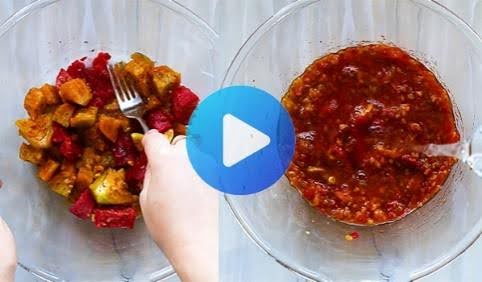Smoothies seem like the perfect weight loss food, right? They are fast, easy, and you can pack them with healthy stuff like fruits and vegetables. Many women I work with turn to smoothies hoping to shed pounds quickly. They see them advertised everywhere as a simple solution. Blend some fruit, maybe some yogurt, and drink your way thin. If only it were that simple.
I have seen countless women try the smoothie route only to feel frustrated. They either do not lose weight, or worse, they gain weight. They feel hungry soon after drinking their smoothie, or they experience energy crashes. This often leads them to believe that smoothies just do not work for weight loss, at least not for them. But that is usually not the case. The problem is not the smoothie itself, but how the smoothie is made. There is a common mistake, a missing piece, that prevents smoothies from being the effective weight loss tool they can be.
Today, I want to share what I call the “smoothie secret”. It is not about some magical ingredient or exotic fruit. It is about understanding what your body, especially as a woman trying to lose weight, truly needs from a meal. Once you understand this secret, you can turn your blender into one of your best allies on your weight loss journey.
Why Most Weight Loss Smoothies Fail Women
Let’s look at the typical smoothie many people make when trying to lose weight. It often involves a lot of fruit – bananas, mangoes, berries, maybe some pineapple. Then perhaps some low-fat yogurt or a splash of fruit juice. It sounds healthy, and it contains vitamins. But what is it missing?
The biggest problem with these common fruit-heavy smoothies is sugar, even natural sugar. While fruit is healthy, too much of it at once, especially without other balancing nutrients, can spike your blood sugar. Think about it: you would probably not eat three whole bananas, a cup of mango, and a cup of pineapple in one sitting. But it is easy to blend all that into a single drink.
When your blood sugar spikes rapidly, your body releases insulin to bring it back down. This quick rise and fall can lead to a few problems for weight loss:
- Energy Crashes: That sugar rush is often followed by a crash, leaving you feeling tired and sluggish.
- Increased Hunger: The blood sugar rollercoaster can trigger hunger pangs soon after your smoothie, making you reach for snacks.
- Fat Storage: When there is too much sugar available and your body does not need it all for immediate energy, insulin helps store the excess as fat.
Another common issue is the lack of staying power. These fruit-heavy, low-fat smoothies often lack sufficient protein and fiber. Protein and fiber are key nutrients that help you feel full and satisfied after a meal. Without them, your smoothie digests quickly, leaving your stomach empty and signaling your brain that it is time to eat again. This makes sticking to your calorie goals much harder.
Finally, portion sizes can be deceiving with smoothies. It is easy to pack a lot of calories into a blender without realizing it. Nuts, seeds, avocado, full-fat yogurt, sweeteners like honey or maple syrup – they all add up quickly. A seemingly healthy smoothie can easily top 500, 600, or even more calories, potentially exceeding what you might eat in a regular solid meal.
So, the common smoothie fails because it is often unbalanced: too high in sugar, too low in protein and fiber, and sometimes too high in overall calories.
The Smoothie Secret: Balance is Everything
Now for the secret. It is simple but powerful: A weight-loss smoothie must be balanced like a complete meal.
This means paying attention to the macronutrients: protein, healthy fats, and fiber-rich carbohydrates. It is this balance that turns a sugary drink into a satisfying, metabolism-supporting meal that keeps you full, stabilizes blood sugar, and helps your body burn fat more effectively.
Why is this balance particularly important for women? Women’s bodies can be more sensitive to hormonal fluctuations and blood sugar swings. Maintaining stable blood sugar is crucial not just for energy levels but also for managing cravings and supporting hormones that influence metabolism and fat storage. A balanced smoothie helps achieve this stability.
Let’s break down the components of a perfectly balanced weight-loss smoothie.
Pillar 1: Protein Power
Protein is non-negotiable in a weight-loss smoothie, especially for women. Here is why:
- Satiety: Protein is the most satiating macronutrient. It helps you feel fuller for longer compared to carbs or fats, reducing the urge to snack between meals.
- Muscle Maintenance: When you lose weight, you risk losing muscle mass along with fat. Protein helps preserve lean muscle. More muscle means a higher metabolism, as muscle burns more calories at rest than fat does.
- Thermic Effect: Your body uses energy to digest food. Protein has a higher thermic effect than carbs or fats, meaning you burn slightly more calories just by digesting it.
How much protein? Aim for at least 20-30 grams of protein in your meal-replacement smoothie.
Good Protein Sources for Smoothies:
- Plain Greek Yogurt: High in protein, creamy texture. Choose plain varieties to avoid added sugars. (Around 15-20g protein per cup)
- Cottage Cheese: Another dairy powerhouse, surprisingly good in smoothies. Adds creaminess and protein. (Around 20-25g protein per cup)
- Protein Powder: A convenient way to boost protein. Choose wisely.
- Whey Protein: Fast-digesting, great post-workout.
- Casein Protein: Slow-digesting, good for sustained fullness.
- Plant-Based Powders: Pea, soy, hemp, brown rice protein are good options for vegetarians, vegans, or those with dairy sensitivities. Look for blends for a complete amino acid profile.
- Important: Check labels for added sugars or artificial ingredients. Choose unsweetened or naturally sweetened options.
- Tofu (Silken): Blends smoothly, adds plant-based protein without much flavor. (Around 10g protein per 1/2 cup)
- Nut Butters (in moderation): Peanut, almond, cashew butter add some protein, but also fat and calories, so use sparingly. (Around 7-8g protein per 2 tbsp)
- Seeds (Hemp, Chia, Flax): While primarily sources of fiber and fat, they contribute some protein too. (Hemp seeds offer about 10g per 3 tbsp).
Adding a solid protein source transforms your smoothie from a snack into a substantial meal component that supports your weight loss goals.
Pillar 2: Fantastic Fiber
Fiber is another hero nutrient for weight loss that is often lacking in basic fruit smoothies.
- Fullness Factor: Fiber adds bulk to your smoothie and slows down digestion. This helps you feel full and satisfied, preventing overeating. Soluble fiber, in particular, forms a gel-like substance in your stomach, enhancing this effect.
- Blood Sugar Control: Fiber slows the absorption of sugar into your bloodstream. This prevents those sharp spikes and crashes, leading to more stable energy levels and reduced cravings.
- Digestive Health: Fiber keeps your digestive system running smoothly, which is important for overall health and nutrient absorption.
How much fiber? Aim for at least 8-10 grams of fiber in your smoothie.
You Might Be Interested In: Learning more about The Complete Smoothie Detox & Weight Loss Program
Good Fiber Sources for Smoothies:
- Leafy Greens: Spinach, kale, romaine lettuce. You can add a large handful without drastically changing the flavor, especially when combined with fruit. They are packed with nutrients and fiber. (Spinach: ~1g per cup)
- Vegetables: Cucumber, zucchini, celery, cooked beets, pumpkin puree, cauliflower (steamed and frozen works well). These add volume, nutrients, and fiber with fewer sugars than fruit. (Zucchini: ~2g per cup)
- Berries: Raspberries, blackberries, blueberries, strawberries. These fruits are lower in sugar and higher in fiber compared to tropical fruits. (Raspberries: ~8g per cup)
- Avocado: Provides creamy texture, healthy fats, and a good dose of fiber. (Around 7g fiber per half avocado)
- Seeds:
- Chia Seeds: Absorb liquid and create a gel, adding thickness and lots of soluble fiber. (Around 10g fiber per 2 tbsp)
- Flax Seeds (Ground): Best absorbed when ground. Good source of fiber and omega-3 fats. (Around 4g fiber per 2 tbsp)
- Psyllium Husk: A concentrated fiber source. Start with a small amount (1 tsp) and drink plenty of water, as it absorbs a lot.
- Oats (Rolled): Add soluble fiber and make the smoothie more substantial. (Around 4g fiber per 1/2 cup dry)
Including high-fiber ingredients is crucial for making your smoothie filling and blood-sugar friendly.
Pillar 3: Healthy Fats
Fat often gets a bad rap in weight loss circles, but healthy fats are essential, especially for women’s health and satiety.
- Satiety and Slow Digestion: Fat slows down stomach emptying, contributing to feelings of fullness and satisfaction long after your meal.
- Hormone Balance: Healthy fats are building blocks for hormones, including those that regulate metabolism and appetite. Balancing hormones is key for effective weight loss in women.
- Nutrient Absorption: Some vitamins (A, D, E, K) are fat-soluble, meaning your body needs fat to absorb them properly. Adding healthy fats helps you get more nutritional value from your smoothie.
- Flavor and Texture: Fats add creaminess and richness, making your smoothie more enjoyable.
How much healthy fat? Aim for a moderate amount, about 10-15 grams per smoothie. Remember fats are calorie-dense.
Good Healthy Fat Sources for Smoothies:
- Avocado: Creamy texture, fiber, and monounsaturated fats. (About 15g fat per half avocado)
- Nuts: Almonds, walnuts, cashews. Use whole nuts or nut butters. Stick to a small handful or 1-2 tablespoons of butter. (Almonds: ~14g fat per 1/4 cup; Almond Butter: ~16g fat per 2 tbsp)
- Seeds:
- Chia Seeds: Provide omega-3s and fiber. (About 9g fat per 2 tbsp)
- Flax Seeds (Ground): Good source of ALA omega-3 fatty acids. (About 9g fat per 2 tbsp)
- Hemp Seeds: Offer a good balance of omega-6 and omega-3 fats. (About 13g fat per 3 tbsp)
- Pumpkin Seeds/Pepitas: Provide healthy fats and minerals like magnesium. (About 14g fat per 1/4 cup)
- Coconut Oil or MCT Oil: Use sparingly (1 tsp to 1 tbsp). MCT oil is easily converted to energy.
- Full-Fat Yogurt (in moderation): If using instead of low-fat, it contributes some fat.
Choosing one or maybe two sources of healthy fat per smoothie is usually sufficient to get the benefits without overdoing the calories.
What About Carbs and Liquids?
Carbohydrates are necessary for energy. The key is choosing the right kinds and amounts.
- Focus on Low-Glycemic Fruits and Veggies: Prioritize berries, leafy greens, cucumber, zucchini, etc. These provide nutrients and fiber without causing huge blood sugar spikes.
- Limit High-Sugar Fruits: Use bananas, mangoes, pineapple, dates, and grapes more sparingly. A small amount (like 1/4 or 1/2 banana) can add sweetness and creaminess without overloading on sugar.
- Avoid Added Sugars: Steer clear of fruit juices, honey, maple syrup, agave nectar, or sweetened yogurts and milk alternatives. If you need extra sweetness, try a very small amount of stevia or monk fruit, or rely on the natural sweetness of berries.
Liquids:
- Water: The best zero-calorie base.
- Unsweetened Plant-Based Milk: Almond, cashew, soy, or oat milk (check labels for unsweetened versions).
- Unsweetened Green Tea (Chilled): Adds antioxidants.
- Coconut Water (Unsweetened): Provides electrolytes, but use in moderation as it contains natural sugars.
- Avoid Fruit Juices: These are concentrated sources of sugar without the fiber of whole fruit.
Use just enough liquid to get your blender going. Too much liquid can make the smoothie less filling. Aim for a thick, spoonable consistency if possible.
Putting It All Together: The Balanced Smoothie Formula
Think of building your smoothie like building a balanced plate:
- Protein Source (Choose 1): 1 scoop protein powder OR 1 cup Greek yogurt/cottage cheese OR 1/2 cup silken tofu OR appropriate serving of other source. (Aiming for 20-30g protein)
- Fiber Source (Choose 1-3): 1-2 cups leafy greens OR 1/2 cup low-sugar veggies OR 1/2 cup berries OR 1-2 tbsp chia/flax seeds OR 1/4 cup oats. (Aiming for 8-10g+ fiber)
- Healthy Fat Source (Choose 1): 1/4 – 1/2 avocado OR 1 tbsp nut butter OR 1/4 cup nuts OR 1-2 tbsp seeds. (Aiming for 10-15g fat)
- Low-Sugar Fruit/Flavor (Optional, small amount): 1/4 – 1/2 banana OR 1/2 cup other fruit OR spices like cinnamon, vanilla extract.
- Liquid Base (Add as needed): Water OR unsweetened plant milk OR green tea. Start with about 1/2 – 1 cup and add more only if necessary for blending.
Example Balanced Smoothie Recipes
Here are a few ideas to get you started. Feel free to adjust based on your preferences and what you have on hand, keeping the balance principle in mind.
Recipe 1: Green Protein Powerhouse
- 1 scoop unsweetened vanilla protein powder (whey or plant-based)
- 1 large handful spinach
- 1/2 avocado
- 1 tbsp chia seeds
- 1/2 cup unsweetened almond milk
- 1/2 cup water (or more if needed)
- Ice cubes (optional)
- Approximate Nutrition: High protein, high fiber, healthy fats.
Recipe 2: Berry Fiber Bliss
- 1 cup plain Greek yogurt (0% or 2%)
- 1/2 cup mixed berries (frozen works well)
- 1 tbsp ground flax seeds
- 1/4 cup rolled oats
- Small handful kale (stems removed)
- 1/2 cup water (or more if needed)
- Approximate Nutrition: Good protein, very high fiber, moderate healthy fats.
Recipe 3: Creamy Chocolate Peanut
- 1 scoop unsweetened chocolate protein powder
- 1 tbsp natural peanut butter
- 1/4 banana (frozen for creaminess)
- 1 tbsp hemp seeds
- 1 cup unsweetened soy milk (or other plant milk)
- Ice cubes (optional)
- Approximate Nutrition: High protein, good fiber, healthy fats (calorie-conscious with peanut butter).
Recipe 4: Veggie Boost Delight
- 1/2 cup cottage cheese
- 1/2 cup steamed and frozen cauliflower florets (surprisingly neutral taste)
- 1/4 cup pumpkin puree
- 1 tbsp almond butter
- 1/2 tsp cinnamon
- 1 cup water (or more if needed)
- Approximate Nutrition: Good protein, high fiber, healthy fats.
Beyond the Blend: Timing and Lifestyle
When should you have your balanced smoothie?
- Meal Replacement: A well-balanced smoothie can replace a meal like breakfast or lunch, especially when you are short on time. Ensure it follows the balanced formula to keep you full until your next meal.
- Post-Workout: A smoothie with protein and some carbohydrates can be great for recovery after exercise. Focus on easily digestible protein like whey and perhaps include a bit more fruit (like half a banana) to replenish glycogen stores.
- Snack (Use Caution): If you make a smaller, lower-calorie version, a balanced smoothie could work as a snack. However, be mindful of total daily calorie intake. Often, a whole food snack (like an apple with peanut butter) might be more satisfying.
Remember, smoothies are just one tool. Sustainable weight loss for women involves a holistic approach. This includes:
- Overall Diet: Focus on whole, unprocessed foods for all your meals.
- Regular Exercise: Combine strength training (to build metabolism-boosting muscle) and cardiovascular exercise.
- Stress Management: Chronic stress can raise cortisol levels, hindering weight loss. Find healthy ways to cope with stress.
- Adequate Sleep: Poor sleep affects hormones that regulate appetite and metabolism. Aim for 7-9 hours per night.
- Hydration: Drink plenty of water throughout the day.
A balanced smoothie fits perfectly into this healthy lifestyle, providing a convenient and nutritious meal option that supports your goals. It is not a magic potion, but understanding the “secret” of balance allows you to use smoothies effectively, avoiding the common pitfalls and making them a valuable part of your weight loss journey. Stop drinking just blended fruit and start building balanced smoothie meals. Your body will thank you with sustained energy, fewer cravings, and better progress towards your goals.
Related YouTube Video
Final Thoughts
Making smoothies work for weight loss is not about finding a miracle ingredient. It is about understanding basic nutrition and applying it to your blended meals. By focusing on the balance of protein, fiber, and healthy fats, you create a smoothie that nourishes your body, keeps you full and satisfied, helps stabilize blood sugar, and supports your metabolism. This approach is especially important for women, whose bodies respond significantly to hormonal and blood sugar balance. Ditch the sugar-laden fruit bombs and embrace the power of a truly balanced blend. It might just be the simple shift you need to see real, sustainable results on your weight loss journey. Remember to combine smart smoothie choices with an overall healthy lifestyle for the best outcome.







